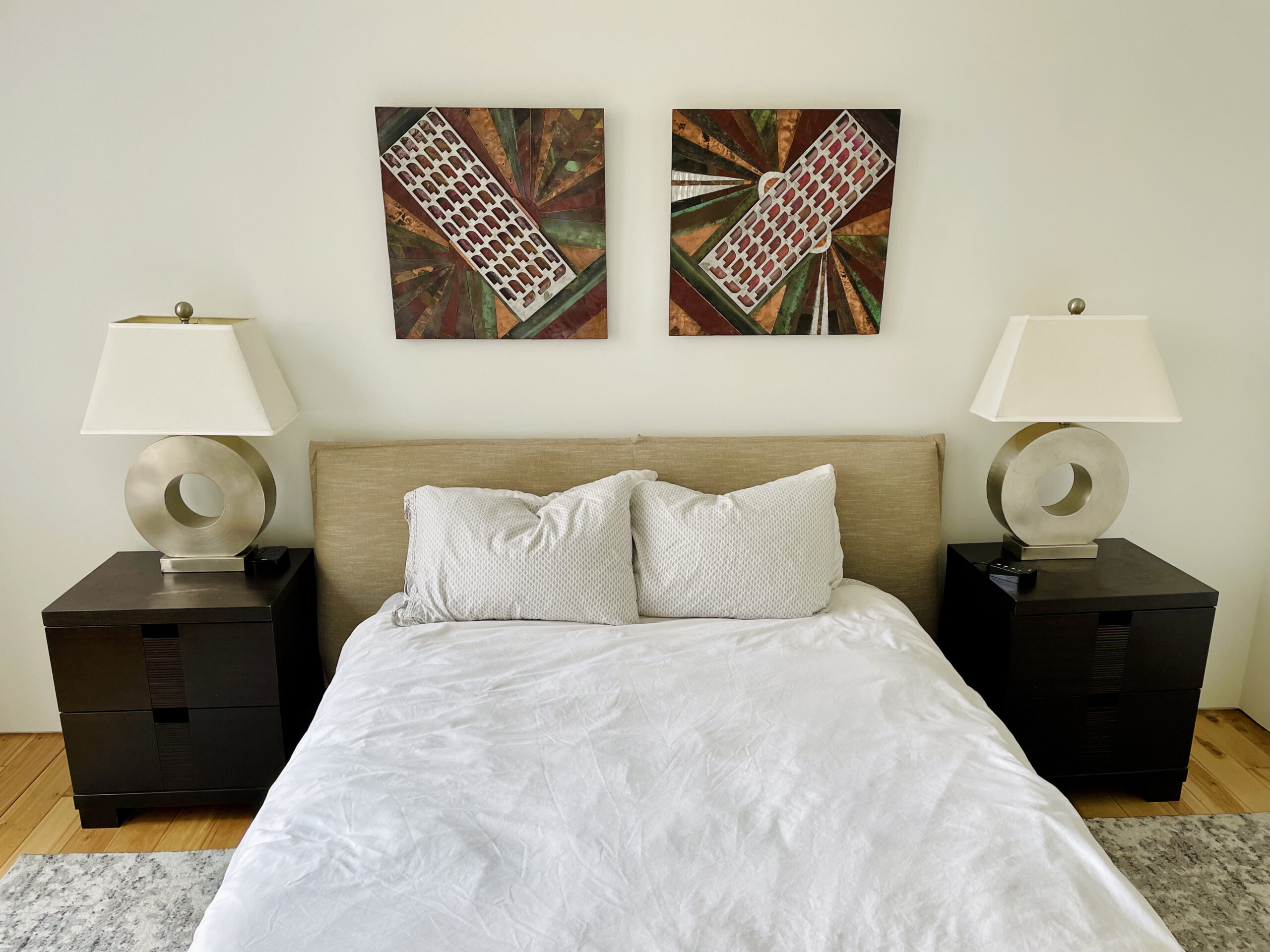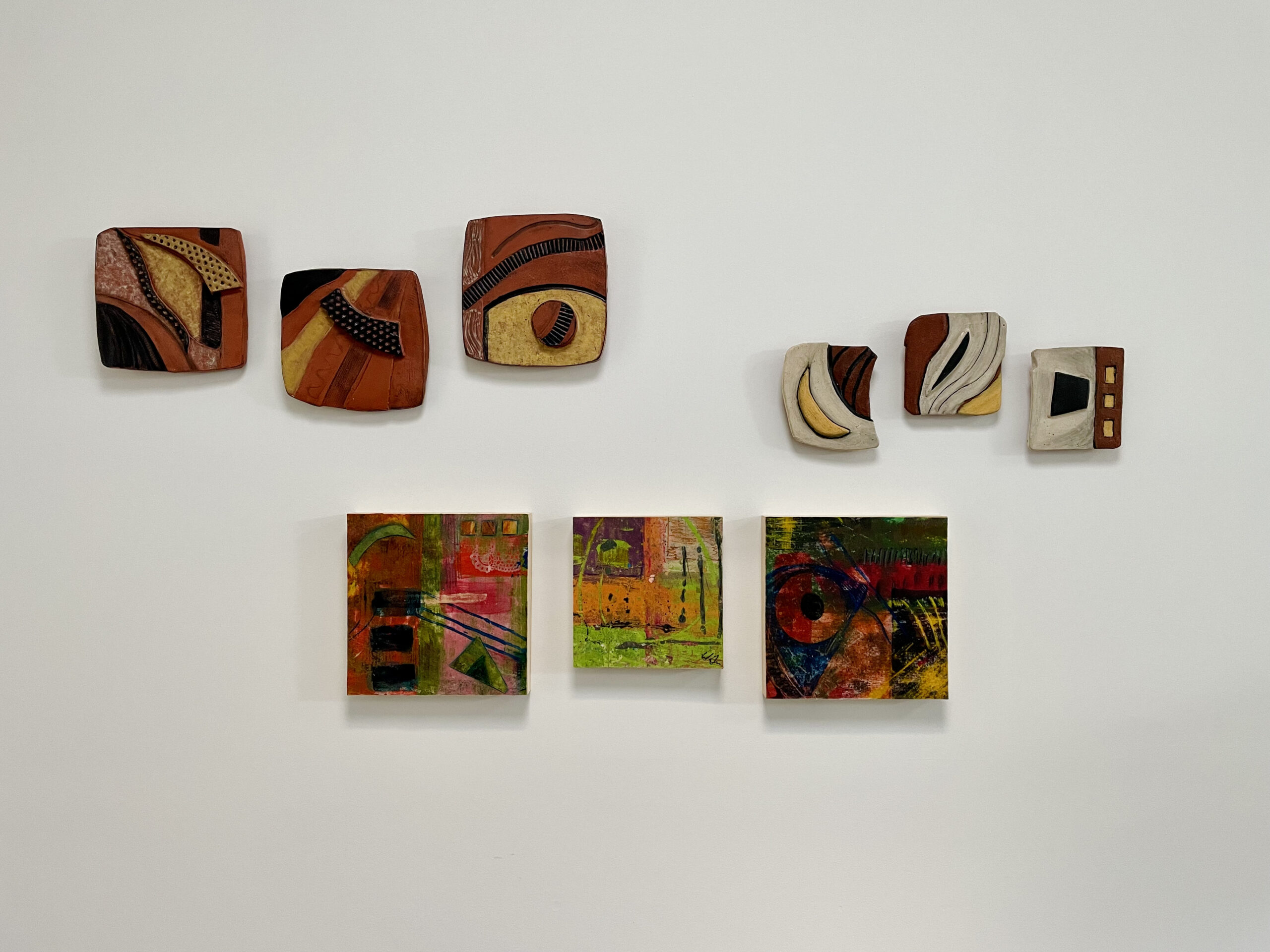Ed and Linda Gross
E1507 Summer Showcase (2023)
Curated by Dustin Kuhns
There is always a crowd at Ed and Linda’s studio. A dancer, a trombonist, and a gladiator all hang their hats and keys on the third floor of the old Crown Cork and Seal building. With the archives of found objects and materials, each awaits their next moment in the sun.
Beyond the whimsy of Ed’s sculptures and assemblages lies a deep admiration of the raw processes exacted on the earth-bound objects—organic, inorganic, human-made or otherwise. Timeless tools and materials (previously revered only in passing moments by hands which work them over) are now promoted to the position of clarified, aesthetic wall-hangings. Now suspended in time, the copper, wearing patinaed chartreuse and painted milk red, trades stories of storms come and gone. As though the stagehands were invited to take a bow, discarded aluminum carcasses step into the spotlight alongside famous stars of manufacturing, artifacts equivocated by time and flattened by the canvas to human scale.


The ArtDoors are convenient reclamations for a found object artist: these sturdy ready-made canvases structurally support artifacts and provide delicate composition lines. Yet the symbol of the door itself offers the key to every piece. Each one nudges the viewer through a portal to the varied pasts and presents disclosed by each artifact, renewed.

Whereas the bold, glossy color blocking of Ed’s sculptures draws the object itself from mundane into the playful imaginary, Linda’s most vivid cavasses do the inverse. Vibrant pastels softly matte-finished in the clay printing technique, perform the technicolor vibrance of busy days leisurely composed. Despite the varied energies at play in each of Linda’s clay printings there is no contest between forms or colors.

In what feels like a suddenly graphically saturated world, both Ed and Linda’s reclaimed abstract and Cubist forms rebel against the limitations of the canvas as image. Abstract expressionism normally does well to graphically depict the tension and fragmentation of our frenetic modernity. Yet on the canvas, neither Ed nor Linda frighten us with the forces of fragmentation. To those who know them, this friendliness is unsurprising.
By drawing out familiar Cubist shapes and Kandinsky’s pure abstractions into the space of the room—around and in-front of the canvas—Ed’s metal collages and Linda’s unassertive clay triptych’s shed soft light on hard lines, transfiguring old threatening forms in affable silhouettes who prefer gin martinis to lingering with our inhumanity. In the relaxed not-quite square-ness of Linda’s clay canvases there is an abiding comfort despite the sometimes harsh realities of modern life. Here, we can imagine the cast of Ed and Linda’s gentle face-finding pareidolia, socializing:
“If you go in, can you make another Vesper?”
“You drink too much! Did you see the news today?”
“The world’s violent as ever. And what of it? The Vesper, I mean.”



